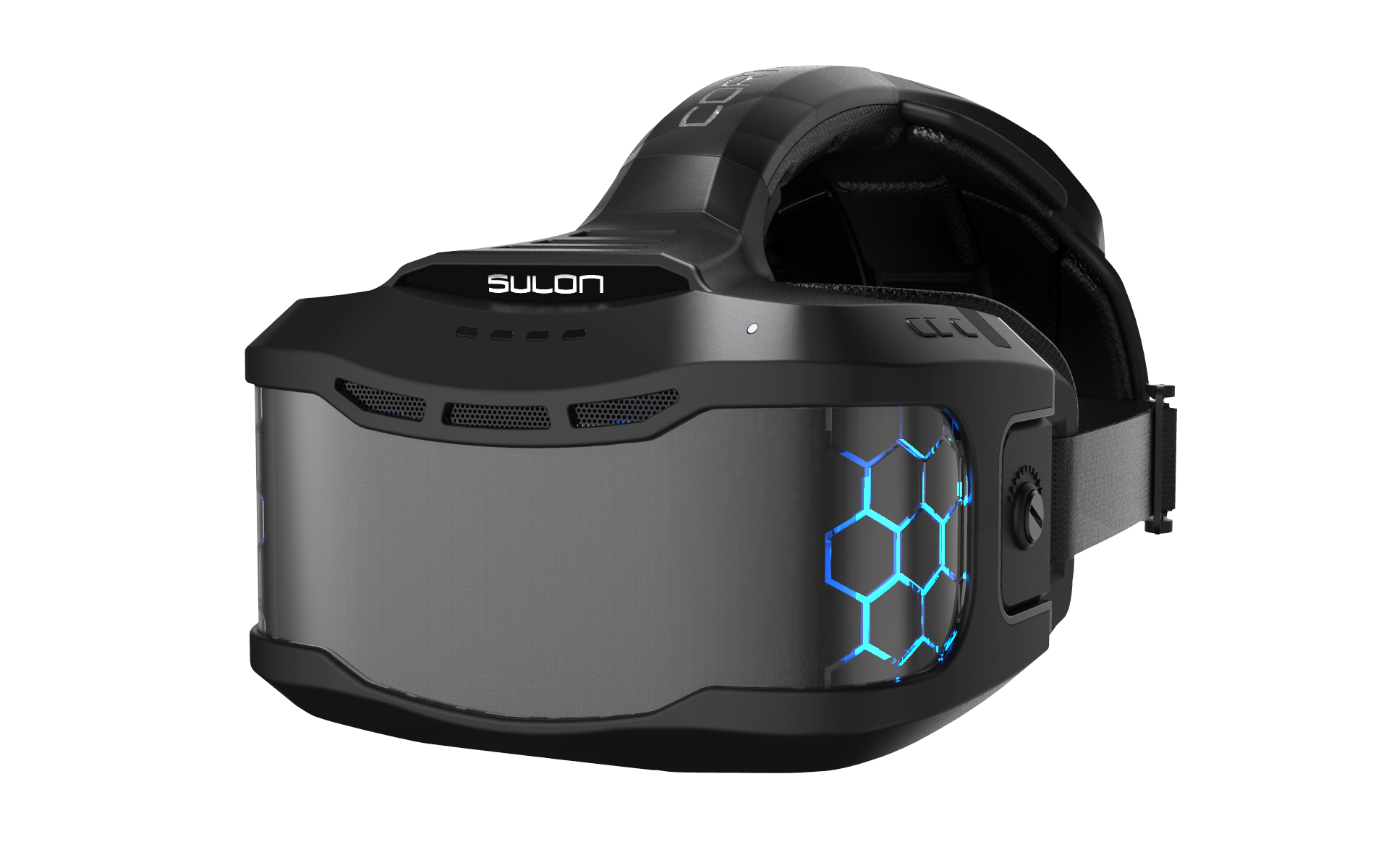Embedded above is a cool tech demo that Epic unveiled last year for Unreal Engine 4 when it was showing off Blueprints, its anyone-can-make-a-game graphic interface for the engine.
But you know what's cooler than watching that demo? Getting to walk around inside that room while those guys are duking it out. Sulon Technologies's Augmented Virtual Reality headset, the Cortex AVR let me do just that.
I was tired when I arrived to see the Cortex AVR. It was my last appointment of the week, and I had seen several VR tech demos already from new IPs with fairly massive technical bugs, so I didn't expect much. I had seen some non-working show-models of the headsets at an after-hours party the night before and had only locked down my appointment a few hours earlier. So I came with fairly low expectations.
EVE Valkyrie is the most fun VR gameplay experience I've had (and gets more fun every time I get to play it), while Weta Digital's "Thief in the Shadows" VR recreation of Smaug's treasure room from The Hobbit: The Desolation of Smaug made me believe that VR could completely replace movies. But surprisingly, the most I have been immersed in VR was Sulon Cortex's demo using the UE 4 scene in the trailer above.
It's quite possible that Valve and HTC's Vive VR headset has similar capabilities like the Cortex, sd both use tracking information from the headset itself instead of the an external source. The Cortex has a pair of cameras embedded in the faceplate, and on the back, behind the head is a ball which I was told contained a sensor. The prototype at the back had the ball removed with what looked like a cylinder that moved independently from the rig, a large gyroscope perhaps, but Sulon's developers declined to talk about how the sensor technology worked, with VR tech being such an emergent field. The demo unit I used was wired, but I was told the production models will be wireless.
The first thing I was asked to do in the demo was to walk over to a wall. I approached it and was asked to put my hand out. In the exact place where my hand should have touched the tile wall in the demo, it touched the real wall in the hotel meeting room we'd met in. I knelt down to the floor and discovered the same 1-to-1 correspondence there. Then they started playing the fight.
If you've ever been sucked into a movie, I'd say this was about fifty times as engrossing, since they were the same size as I was, and in the same "physical" space. While the armored figures fought, I could step around the fight, or get as close as I wanted. There was no direct feedback, but at one point they paused the playback, and I could look directly at the characters and step around them, before they began it again in slow-motion. Since it was running off the Unreal Engine in real-time, you could pretty much do whatever you wanted. The demo had run in full-speed up until then, with no slow-motion like the cinematic trailer above.
It wasn't perfect, though. The characters were slightly jittery when it was paused and moved around slightly as I moved near them, but this was not noticeable when the fight was playing forward. Additionally, while the headset was wired, all the video processing could be handled from the wired source, but the plan is for the device to be standalone. While the headset has Wi-Fi and can support a HDMI direct feed through an onboard port, I did wonder if Wi-Fi would be fast enough to send the necessary data to the unit
.
Press materials say the Cortex AVR doesn't need a connection to a PC, console, mobile phone, or tablet, which would mean all the processing had to happen onboard, of which I am skeptical it could deliver on the promise of the demo. Still, the experience of full range of motion within the VR space was the most solidly amazing example of VR technology I've seen yet and the applications for games and other media feel limitless.

Having gotten a chance to try VR where you can physically move around the space itself, I am convinced that this is what it has to be for the medium to catch on fully. It was like living in a game, rather than being outside of one, pushing in with counter-intuitive input devices like controllers. This was the difference between getting the visual feed from a robot that acted as your avatar from a control stick, sending you a visual feed and maybe its head moving when yours did, and literally feeling like you were in another space, another world.
I loved VR before, but Sulon's Cortex AVR system is the first time I was convinced that it will appeal to the mass market. The first device I felt would truly make us all feel like we've been transported into new places through this medium. The Sulon Cortex AVR is currently looking to attract developers, and will ship a dev kit later this year for $499 that can be preordered from Sulon's website.







